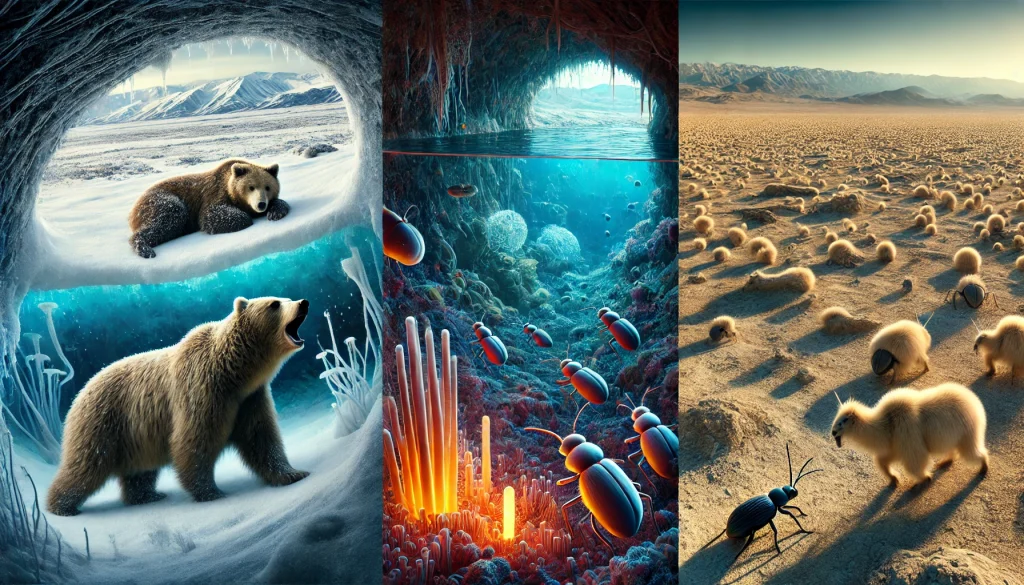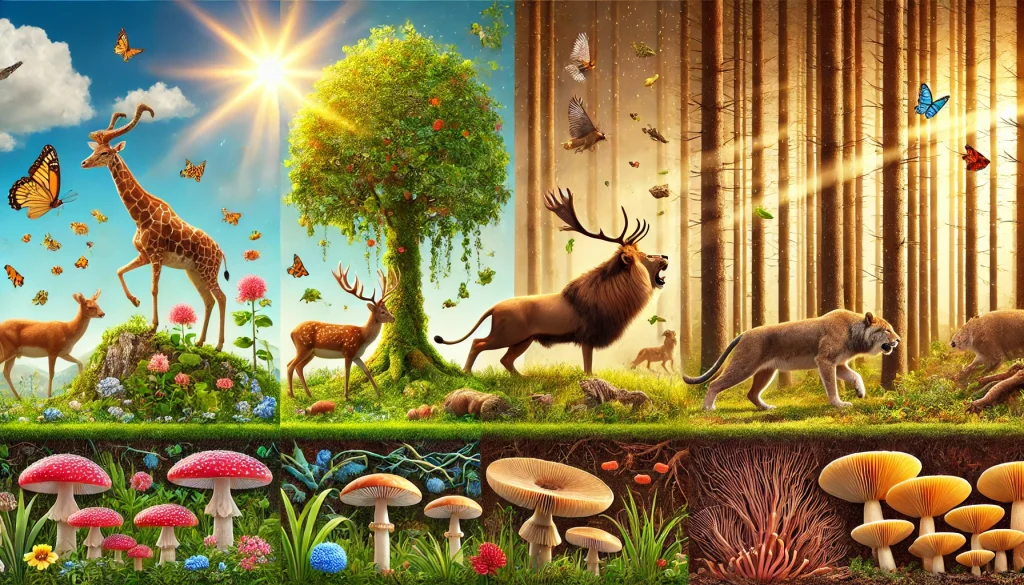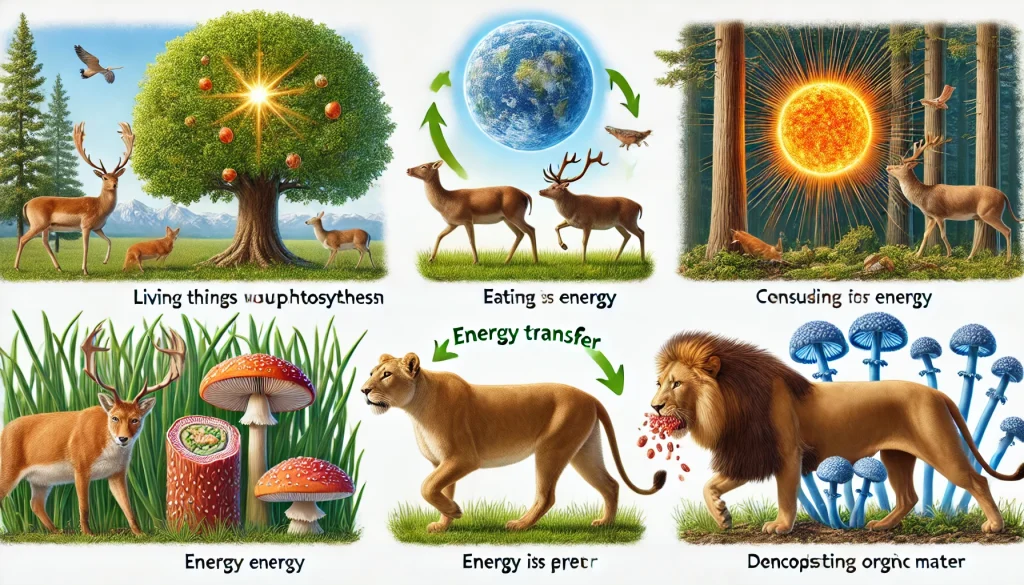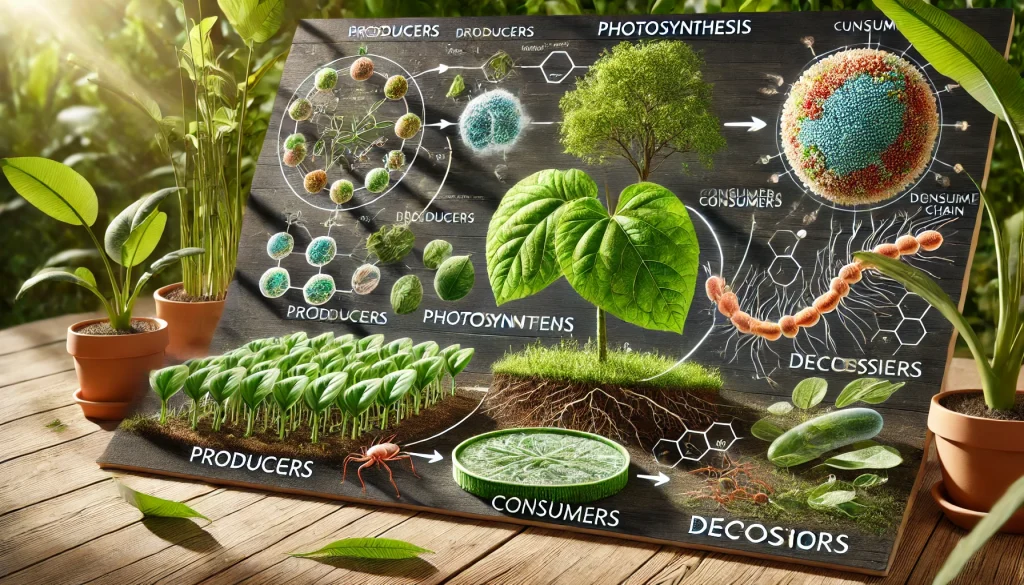The Need for Food in the Natural World
Every living thing needs energy to survive. Some get their energy by eating food, while others create it on their own. But do all living things have to eat? Let’s explore how life in nature works and how energy moves through the food chain.
How Long Can Living Things Survive Without Food?

Most living organisms cannot survive long without food. For example, humans can survive up to 3 weeks without food, depending on their health and water intake. Bears survive for months by hibernating and using stored fat. Some microorganisms, like certain bacteria, can survive years in harsh conditions without eating by going dormant. Insects like desert beetles can survive on minimal resources due to their unique adaptations.
Understanding the Concept of Eating in Living Organisms
Eating means taking in energy in a form the body can use. For humans, this means eating meals. For plants, it means soaking up sunlight. Every living thing uses energy to stay alive, grow, and reproduce. This process is called metabolism. Without energy, life would stop.
How Living Things Meet Their Nutritional Needs

Autotrophs: Some living things, like plants, algae, and certain bacteria, create their own food through a process called photosynthesis. They use sunlight, water, and carbon dioxide to produce energy-rich food.
Heterotrophs: Animals, including humans, can’t make their own food. They eat plants or other animals. Herbivores eat plants, carnivores eat other animals, and omnivores eat both plants and animals.
Exceptions in the Natural World: Do All Living Things Eat?
Some creatures survive without eating in the way we understand it. For example:
- Chemosynthesis: Certain deep-sea organisms get energy from chemicals in their environment instead of food or sunlight.
- Microorganisms: Some bacteria and fungi absorb nutrients from their surroundings, breaking down decaying material.
How Living Things Use Food to Stay Alive

Food is fuel for living things. Energy from food keeps bodies working, helps them grow, and repairs damage. Nutrients like proteins, carbohydrates, and fats are essential for survival. Without these, bodies weaken and may stop working entirely.
Survival Strategies Without Eating
Hibernation: Some animals like bears can survive harsh winters by sleeping for months. They slow down their metabolism and use stored fat for energy.
Dormancy: Many plants and animals pause their life processes during tough seasons. Seeds stay dormant until conditions improve.
Human Survival: While humans can survive weeks without food, they need water much sooner. Energy stored in body fat and muscles helps for a short time.
Related Biological Processes and Terms

Metabolism: This is how the body uses food for energy. It includes digestion, where food breaks down, and absorption, where the body takes in nutrients.
Photosynthesis vs. Chemosynthesis: Plants use photosynthesis to turn sunlight into food. In contrast, some deep-sea creatures use chemosynthesis, turning chemicals into energy.
Food Chain and Energy Transfer: The food chain shows how energy moves from one living thing to another. Plants are producers, animals that eat plants are consumers, and decomposers like fungi break down dead material.
Life’s Need for Energy and Food
Food is essential for life. It fuels growth, survival, and reproduction. Nature keeps life balanced through the food chain, ensuring that energy flows from one living thing to another. Life depends on energy, whether from sunlight, food, or even chemicals in the deepest parts of the ocean.
FAQ
Creatures with faster metabolisms need more energy. For example, hummingbirds eat constantly because they burn energy quickly.
No. Different creatures have different needs. For example, cows eat grass while wolves eat meat.
Yes, but only in rare cases. Deep-sea creatures that rely on chemosynthesis survive without sunlight or traditional food.
